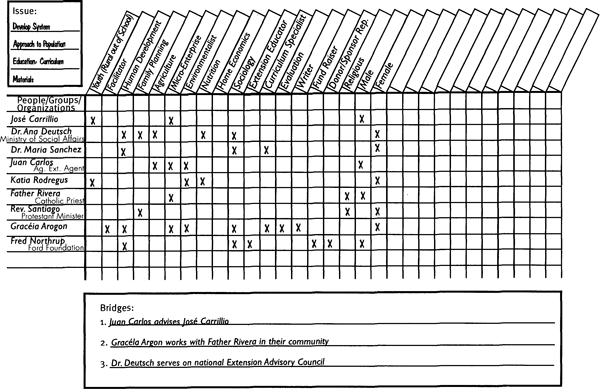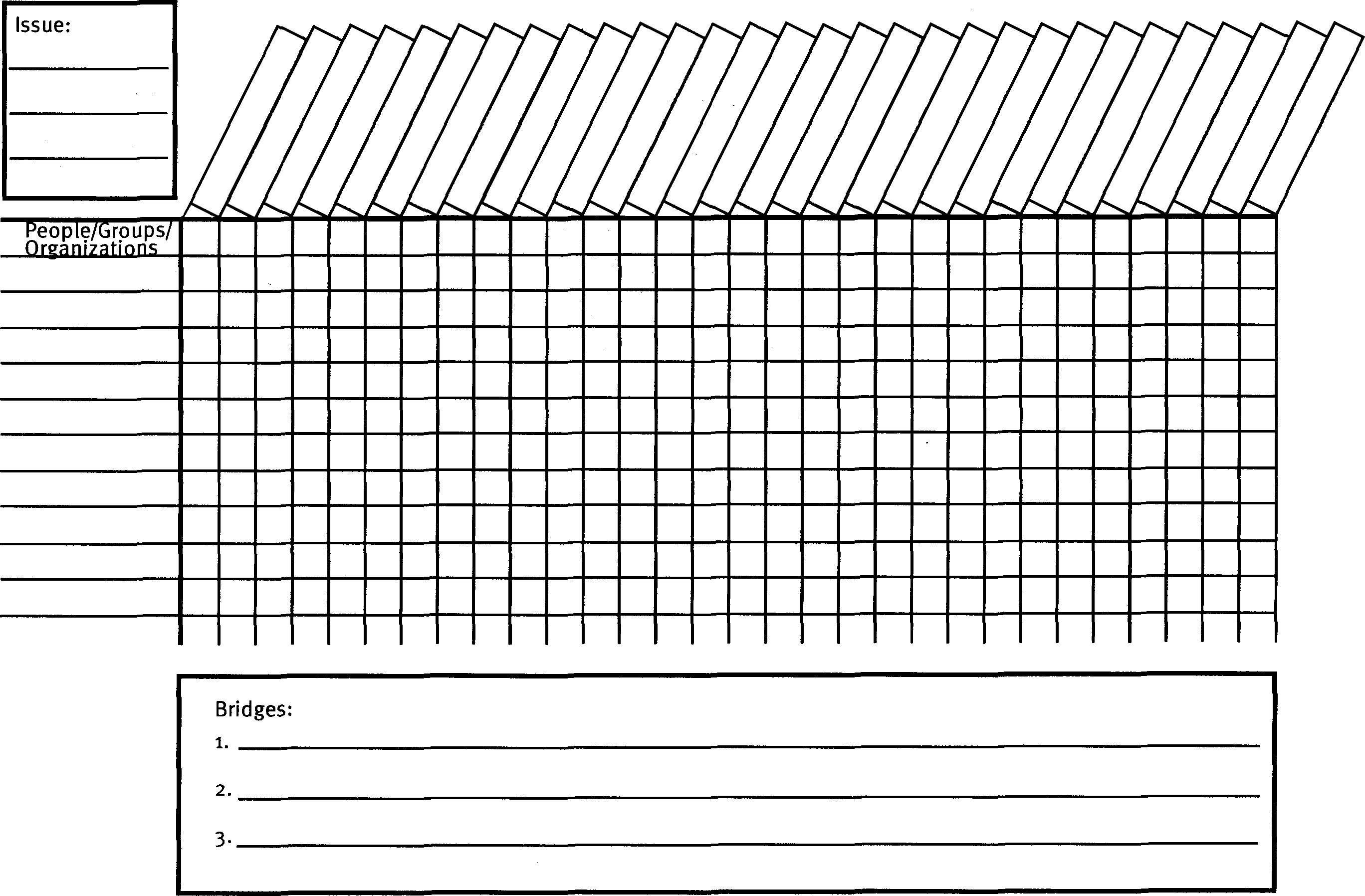|
Adapted
from: On Common Ground: Collaborations in Action - Resolving Land Use Issues
Together by Susan Halbert and
Jean Hovey (1995). Reproduced with
permission from the authors and National 4-H Council. These materials are copyrighted
and available for purchase at National 4-H Council, 7100 Connecticut Ave.,
Chevy Chase, Maryland. U.S. A. Adaptations by the author for population education curriculum development are in (italics). |
Why an issues grid can help:
Making sure all parties to an issue — those who can affect and those who are directly affected by an issue -- are invited to the collaboration (curriculum development process) is one of the most important steps when forming a collaboration. (The issues grid provides one effective way to systematically assure that all known interested parties are represented.)
Steps to completing an issues grid:
Even if the grid is initially completed by one person, it should be widely shared with several others interested in resolving the issue (developing population education curriculum).
Step 1: Think about an issue of concern to you. Enter a brief description of the issue at the top of the issues grid on the next page.
Step 2: Write the relevant considerations (criteria) for the issue in row one across the top of the worksheet. Relevant considerations (topics or areas of interest) are those things you think about to help ensure those affected by and who can affect the issue are included (i.e., Who lives in the area? Who has authority or jurisdiction? (What are the social, health, economic, and religious customs and laws governing children, families, or reproductive rights and responsibilities?) What about representativeness? Are age groups, genders, religious and ethnic groups all represented? Who can block actions? What interests might be involved? What kind of expertise is important to this population education for rural out-of-school youth? Scientific? Sociological? Educational? Political? Medical?)
Remember - criteria will vary with the issue.
Step 3. List people or organizations associated with the issues in Column A (Row 1- across the top) of the grid.
Step 4. Check your list of people and organizations (Column One) against the considerations (interest areas) you identified as important (Row One), "X" those considerations that apply to the people or groups you listed. Then take a look at your grid. Where are the gaps? Brainstorm with others to identify people who can help "fill in" the worksheet. The goal is to be inclusive.
Step 5. Identify "bridges" - people or strategies for getting resistant or under-organized people to the collaboration.
|
Does the issue you're working on have a long history? Have lines between people and groups concerned with the issue been drawn? Sometimes it's best to call a third party to facilitate a meeting. Use this quick checklist to help you decide if your issue requires a third party facilitator: √ There is a long history of bad feelings about the issue (among interested/affectedparties). √ Distrust is very high among parties. |
Review the completed issue grid (for population education) curriculum development). A blank grid is provided to use for your curriculum development team or other groups.
Collaboration Overview Highlights
Collaboration is a process in which parties to a problem - parties with sometimes wide gulfs between them - seek win/win solutions. It's a way of working within the tangle of passions, complicated cultural, political, and economic drives, and often bitter histories to do what sometimes seems the impossible - to do what's best for the land and for the people.
POPULATION EDUCATION CURRICULUM DEVELOPMENT TEAM GRID

All names and organization are ficticious
ISSUES GRID

© National 4-H Council, 7100 Connecticut Avenue, Chevy Chase, Maryland 20815 U.S.A.